Up to what floor are houses gasified: legislative norms and rules for gasification of high-rise buildings
The number of high-rise buildings is growing every year, along with their possible number of storeys. And the higher a person “climbs”, the more expensive the apartment.But at the same time, not all modern amenities are available to the lucky owners of a panoramic view of the city. Legislative documents used to strictly regulate up to which floor houses were gasified, but norms and laws are constantly changing, and the data in advisory and mandatory documents vary.
Agree that when counting, for example, on long-awaited housing in a new building, you want to know exactly all the nuances and technical capabilities in advance.
When “blue fuel” appears in every apartment, is it possible to gasify the entire high-rise building with an autonomous gas holder, which floor will the main gas reach, and what documents standardize the rules for resource supply to apartment buildings? We will try to answer these and many other questions in detail.
The content of the article:
Documents regulating gasification
The law determines that on a site officially registered as individual housing construction, it is impossible to build houses whose number of storeys above the basement level exceeds 3 levels or 12 meters from the ground to the level of the roof ridge.
Even according to old standards and laws, restrictions on gasification began only from the 5th floor. Therefore, initially, when discussing above what floor or meter above ground level gas cannot be installed, we deliberately postponed individual housing construction and began to talk about the possibilities of equipping apartment buildings, starting from the 5th tier.
To begin with, let's look at autonomous gas supply.

“Technical regulations on the safety of household gas equipment” in paragraphs 1.2 and 1.3 states that fuel can be supplied from tank installations to buildings up to 10 floors, in the case of using group cylinder installations - no more than 5 floors.
That is, autonomous supply is possible from 5 to 10 floors, depending on the type of devices used in distribution; you are unlikely to be able to arrange a supply higher.
One of the first documents that regulated the main gas supply to high-rise buildings was SNiP 2.08.01-89 “Residential buildings”. It has a veto on the installation of gas boilers and pipes supplying them above the 5th floor, but gas stoves are allowed to be installed up to 11.
The document lost its force in 2003 and was replaced by SNiP 01/31/2003 “Residential multi-apartment buildings”, by the way, registered as mandatory at the state level.
But it was also stated there that in houses with a height of 11 floors or more, the installation of electrical appliances for cooking is allowed. In this case, boilers with a closed combustion chamber are allowed. By the way, for some reason many people claim that this document, just like the 1989 document, completely prohibited gas supply in high-rise multi-storey buildings.
It's also surprising that these 2 documents are still advised and cited as relevant, although both of them have expired.
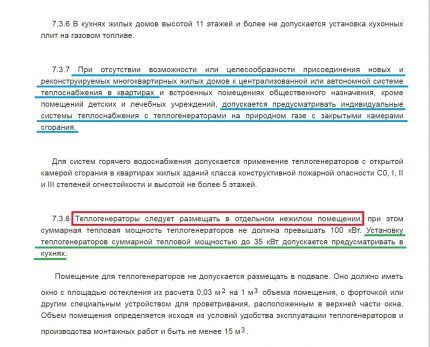
But instead of them, joint ventures appeared for 2011 and then for 2016. And just in the updated edition, the clause on the altitude of gasification was completely abolished.They do not reflect in any way information about which floor the supply of “blue” fuel is limited to.
And on June 6, 2019, by order of the Ministry of Construction it was put into effect SP 402.1325800.2018 “Residential buildings. Rules for the design of gas consumption systems", intended for pipelines in which gas is used as a resource in accordance with GOST 5542 with pressure up to 0.005 MPa inclusive. This is exactly one of those cases when a joint venture is entered into the register as binding.
And you can immediately pay attention to paragraphs 5.16-5.18, which contain instructions for placing gas consumption devices in apartment buildings with a height of no more than 28 meters. However, there are no prohibitions on installation beyond this norm. Why exactly 28 meters?
Because safety regulations are normalized, in houses higher than 28 meters, coordination with the Ministry of Emergency Situations and other structures is required.
Let's look at two more documents. SP 60.13330.2012 “Heating, ventilation and air conditioning” And SP 41-108-2004 “Apartment heat supply of residential buildings with gas-fueled heat generators” — it is practically stated in plain text that there are no restrictions on gasification of multi-storey residential buildings for 5, 10, 11 floors and above.
That is, theoretically, it is officially permitted and possible at the legislative level if the developer carries out the appropriate approvals and all conditions are met.
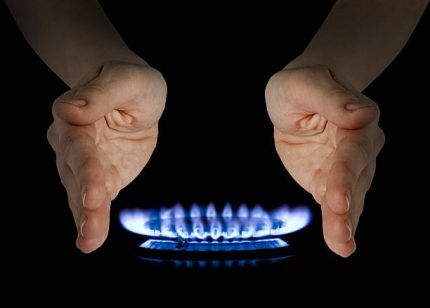
But in practice, it is problematic to implement the plan, although it is quite possible, especially since modern technical capabilities allow this.
A huge number of nuances still often do not allow the construction of high-rise buildings with gas supply.
Main gas in a high-rise building
As a rule, such work is carried out at the design stage of a high-rise building. However, developers are extremely reluctant to carry out this procedure. And that's why? First, let’s figure out how main gas is introduced into apartments in general.
From the distribution network, fuel enters the gas pipeline system. From there it already goes to consumers through branches. It is not always possible to supply gas to an ordinary residential building due to the line being overloaded.
You have to go around the nearest input to gas pipes, often even to a neighboring subscriber network, because the possibilities of the gas pipeline are not limitless, and supplying gas to densely populated areas at the pressure required by law is practically impossible from a single-line position.
According to specifications for bypassing obstacles in the fuel supply, sometimes you have to pay literally millions. And here is an apartment building, and a high-rise building at that. Imagine the number of subscribers. That is, to provide gas to one such house, a separate main line.
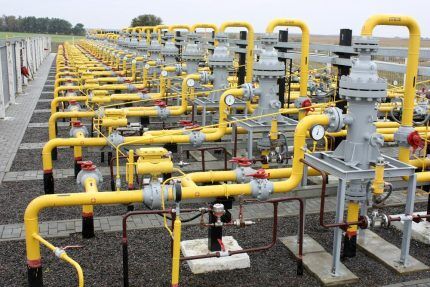
But these are not all the pitfalls. Regulatory documents, including the aforementioned joint venture introduced on June 6, contain a number of complex technical requirements.
To introduce gas into a building, the following conditions must be met:
- Availability of 2 isolated rooms for developing the branch structure.
- Special ventilation and exhaust system, capable of removing waste products from all apartments.
- Corridor ceilings, at least 1.6 m in height with an increased degree of fire resistance.
- A building design that allows the installation of risers in kitchen areas and staircases.
- A large number of shut-off valves in each section of the network.
- High-pressure equipment and its regulation for high-quality apartment gas supply.
- Equipping windows where gas equipment is located with an easily removable glass structure.
- Gas control system on stoves and boilers.
- Emergency dispatch notification.
- Boiler power is more than 50 kW exclusively in isolated areas of the apartment.
- Availability of gas sensors with automatic gas supply cut-off system.
In addition, the same “Technical Regulations on the Safety of Household Gas Equipment”, but this time without regard to gas tanks and cylinder installations, requires supply only to those buildings, the tiering of which will ensure the practical possibility of eliminating fires.
At the same time, there is an unspoken reservation that this is also possible by equipping the local fire protection system.

Thus, partial supply of a high-rise building is practically impossible, and the final cost of the work carried out to fully supply gas, even at the design stage, will seem prohibitive.
Experts say that carrying out such work within a regular high-rise apartment building is simply unprofitable and technically difficult.
What are the dangers of gasification?
What is liquefied domestic gas? It is a mixture of propane and butane, colorless and odorless. When we say “it smells like gas,” we are technically making a mistake, since the fuel itself does not have any aromas.
An odorant is added to it - ethyl mercaptan, which has a characteristic unpleasant odor comparable to rotten eggs or even stale meat. This is necessary so that a person can detect a leak in time using the sense of smell.
Liquefied gas, as we remember from chemistry lessons, is heavier than air. When there is a leak, it “drains”, first of all, into the basements, filling them. In addition, in fact, from 5 to 15% of the gas from the volume of air in the room can easily cause human poisoning and even a fire/explosion.
The number of gasified houses is growing every year. And along with them, the number of victims of household gas explosions. In 2018, 12 emergencies occurred throughout the country, with serious consequences, and this was in just 3 months.
A huge number of major tragedies occurred in apartment buildings in 2019 due to improper handling of gas or poor technical condition of fuel lines.
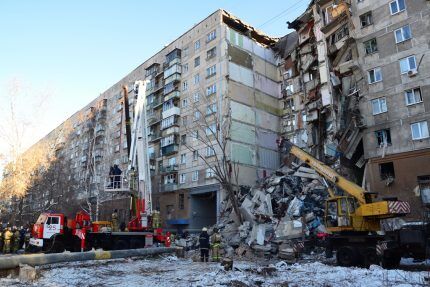
An explosion even in a one-story private house takes lives and causes heavy destruction. And here is a high-rise building with thousands of residents and guests. Moreover, a tall building with a common ceiling system, the complete collapse of which can be provoked by even a small blast wave.
Another reason why the authorities have developed a number of restrictions that complicate gasification is the problem of the technical possibility of saving citizens living above the 11th floor.These people are virtually doomed in a medium-power explosion. Even if they miraculously survive, there is little chance of finding them alive under the rubble of a large building, especially in the cold season.
Projects to ban gasification of high-rise buildings
After the repeal of the 2003 SNiP, which prescribed bans and restrictions on the height of installation of gas appliances, many structures and departments tried to reintroduce them, especially after a series of explosions.
So, at the end of 2017, Rostechnadzor made such a proposal, calling for thinking about electrification. Deputies of A Just Russia also made similar attempts. The initiators propose to at least introduce a veto in new buildings, even if leaving gasification in already built houses with the replacement of stoves with appliances with maximum gas control protection.
However, this is unlikely to happen. Almost all tragedies are associated with the human factor; technical feasibility completely allows the safe use of gas equipment in high-rise buildings.
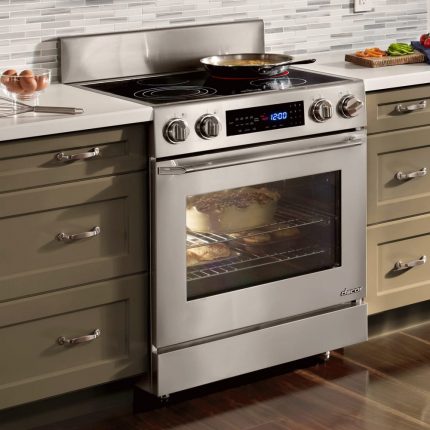
Although many people understand that relying on the adequacy of their neighbors and the safety system of gas installations is not always advisable. There are cases when some residents of apartment buildings try to refuse gas, but their requests are not always satisfied due to various reasons, such as weak electrical wiring that is not suitable for electric stoves.
It turns out to be a double-edged sword. On the one hand, it is difficult to gasify a building; on the other hand, it is difficult to electrify a building already equipped with such equipment.
Conclusions and useful video on the topic
After a series of household gas explosions in the country, inspections of distribution networks began in many regions:
Technologies do not stand still; resource supply organizations are gaining more and more opportunities to implement the most daring projects. Even before 2011, it was difficult to imagine that “blue fuel” would ever appear in apartments above the 11th floor. And today there are no restrictions at all.
And, although the project still seems crude and technically poorly thought out, we can safely say that another couple of years will pass, and residents of high-rise buildings will be able to use gas everywhere, and not just in rare, expensive projects.
What do you think, up to what floor should houses be gasified - as in the old standards, up to 5-11 or without restrictions? Maybe guests from high-rise buildings already equipped with gas will appear here and share their experiences? Write your questions and opinions in the comments, and also participate in the discussion of this material.




I quickly read the article and found at least 2 errors. Firstly, SP 402 is applied on a voluntary basis, and secondly, “TR on the safety of household gas equipment” is a bill that was ultimately rejected by the State Duma of the Federal Assembly of the Russian Federation in 2014...
Hello Olga. Let me explain.
Documents approved by the Ministry of Construction, but not included in the 1521 list, are voluntary documents.
Federal Law No. 463, Article 6: “Pthe voluntary application of standards and (or) codes of rules included in the list of standardization documents specified in paragraph 1 of this article is a sufficient condition for compliance with the requirements of the relevant technical regulations.In the case of application of such standards and (or) sets of rules to comply with the requirements of technical regulations, assessment of compliance with the requirements of technical regulations can be carried out on the basis of confirmation of their compliance with such standards and (or) sets of rules. Failure to apply such standards and (or) codes of practice cannot be assessed as non-compliance with the requirements of technical regulations.". BUT: "In this case, it is permitted to use preliminary national standards of the Russian Federation, organizational standards and (or) other documents to assess compliance with the requirements of technical regulations.»
That is, it does not mean that if a document is not on the list, you may not comply with it. This only means that if the list contains documents that allow you to do something bypassing the voluntary rules, they can be used instead, but not completely ignored.
I quote: “Application on a voluntary basis of standards and (or) sets of rules included in the list of standardization documents specified in paragraph 1 of this article is a sufficient condition for compliance with the requirements of the relevant technical regulations.«.
That is, the current SP or SNiP, which are included in the list of compliance with technical regulations (and SP 402 is included), are fully compliant with legislative acts. The documents in PP 1521 have prerogative, but are not the only laws. Any law that complies with current legislation is automatically active.
Voluntary joint ventures may not be observed only in parts that CONFLICT with mandatory standardization documents and if they can be replaced by such documents. This is evidenced by explanatory letters from the Ministry of Construction. You simply do not quite correctly interpret the concepts of “voluntary” and “mandatory”.
But that is not all. List 1521 includes documents on heat supply and gasification, which in fact stipulate almost all the points of SP 402, and even without that SP 402, as an abbreviated version, fits well here.
Bottom line: since SP 402.1325800.2018 does not contradict the approved SP from the list and non-compliance cannot be replaced by other regulations, this makes it MANDATORY for compliance. And there is no manipulation of the truth or evasion here. Since there are also voluntary documents, compliance or non-compliance with which is your right. Those that are NOT on the mandatory or voluntary list are not approved by the Ministry of Construction. That is, those that are RECOMMENDATIONAL in nature. These are the documents you are talking about.
Show us a document, please, in which you are allowed not to comply with them. I'm not talking about the “Failure to apply such standards and (or) codes of rules cannot be assessed as non-compliance with the requirements of technical regulations”, but how you will find an alternative for a specific joint venture that does not contradict the current mandatory standards. Then I will agree with you.
Oh yes. You also remembered TR, it was canceled not in 2014, but in 2010, if I’m not mistaken. But his demands are quite reasonable. The tiered structure of high-rise buildings cannot provide high-quality fire extinguishing in the technical equipment of MOST cities. I can give you a direct example. And by the time he arrives from the region, he will fly, and half the settlement will have already spoken. So it’s not legislative, but rather reasonable to read this point.
This is, of course, a very interesting situation) because of the wording “voluntary”.This implies “extra” requirements that don’t have to be complied with, but in fact the document is mandatory in almost all paragraphs) They will “call names” themselves, write more documents, approve them, and then complain that people scold them when projects are canceled.
There is, of course, a very interesting situation here because of the wording “voluntary”. This implies “extra” requirements that may not be complied with, but in fact the document is mandatory in almost all paragraphs.
They will call you names, write more documents, approve them, and then complain that people scold them when projects are canceled.
I am now on vacation in the UAE, Dubai. I live in a hotel on the 25th floor. My room has a kitchen with a gas stove. Everything works fine.
I was on the 20th floor on Bystretskaya in Ryazan. The apartments have aogv and gas stoves.
Regarding non-mandatory SNiPs: fire requirements set out in various joint ventures, SNiPs, etc. are mandatory for use, other requirements (not related to fire safety, on a voluntary basis).
I have friends who live in 10+ high-rise buildings that have gas stoves. A specific example is the 14th floor of a 14-story residential building. But these houses were built in the late 1960s - early 1970s. I don’t know what year the requirements changed, but it would be interesting to know.
Lived on the 14th floor of Kaliningrad, Gagarin St. 2a. Also in apartments there are aogv and gas stoves. To check my words in the search we ask “Kaliningrad Gagarin 2a year of construction” and select the site dom.mingkh.ru/kaliningradskaya-oblast/kaliningrad/181467
look there:
Year of construction 2010
Number of floors 15
Gas supply Central
Heat supply Apartment heating (apartment boiler)
Yes, there is no need to install gas in apartment buildings at all; I’m glad that we don’t have it in our house and don’t expect to have it. I have enough electricity. Probably, if we had gas in the house, we would no longer be alive. So my neighbor behind the wall not only drinks, but also smokes, yes, if only he were the only one!
In general, there is no need to let opponents of gasification out of a room with soft walls. Suddenly they jump from the roof. Let them live in safety under the supervision of orderlies.
I am against gas in apartment buildings. To conclude a gas supply agreement, introduce the mandatory provision of a certificate of legal capacity.